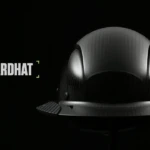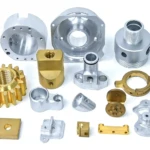This article explains how 3D printing can change the specialty vehicle market.

Manufacturing of special vehicles
The specialty vehicle market is largely made up of local manufacturers who specialize in building police cars or specific types of ambulances. More capital-intensive, larger and more complex vehicles, such as fire trucks, tend to be built by professionals. For example, American Ferrara or Sutphen are very focused on manufacturing American fire trucks. The Austrian company Rosenbauer produces fire trucks for many international markets.

Because this type of vehicle is very different from cars, it is now analyzed separately:
●It is not difficult to see that many composite materials are used in this market, especially in Europe.
●People tend to use extruded aluminum profiles, steel plates and aluminum steel plates. Metal panels and plates can be cut into different shapes by laser cutting or other processes. Bending tools, press brakes and other equipment can also be used in forming manufacturing.
●Welding is mainly done manually and specialty vehicles use more welding processes than other vehicle categories, especially in the United States.
●Special vehicles also use forging, casting and some CNC parts, but they are rarely used.
●For example, fire trucks have extensive and complex pumping and other systems. Some sort of hydraulic component for ladders, elevators or doors is also common. Painting, coating, finishing and some crafting are also used.
market opportunity

The special vehicle market seems very difficult and leaves no room for development. It is generally believed that only large companies will venture into such an industry, as this specialized work will result in higher income. It appears that the market is currently fragmented and consolidation is underway in the United States. Additionally, car assembly could become easier with the shift to electrification, an area that will continue to be labor-intensive and nearly impossible to automate. The development of the automated vehicle market is obviously still much simpler than changing, customizing parts and welding, riveting parts in special vehicles.
Capital investment in this market has stagnated and there have been few groundbreaking product or manufacturing innovations. The first electric fire truck in the United States was sold in 2021, while more than 420,000 electric buses are in service in China. Aside from highly advanced robotic welding capabilities, there does not appear to be any truly transformative technology that could help the industry.
3D printing opportunities
Many companies have significant order backlogs and long delivery times. For example, the delivery time of ambulances in the United States used to be 3-6 months, but due to the increase in chassis delivery time, it is now 12-24 months. Ambulance manufacturers are suffering from a shortage of skilled labor and a backlog that means it takes about 400 hours or more to build an ambulance.
●If the industry switched to using large format carbon fiber polymer 3D printed integrated monocoque cabin structures, it would save a lot of time and money. There are many locations for fixtures, cabinets and equipment that can be incorporated into the design. By deploying software such as Twikit or Trinckle, numerous permutations of the design can be easily presented to customers, and the 3D printed cabin design can then be adapted to meet new needs. This will eliminate large amounts of steel and aluminum, thereby reducing energy and material consumption in the vehicle, leading to lower material costs and lower weight in mass production, with much less welding. The fuel efficiency of the vehicle will also be greatly improved. The amount of work will also be significantly reduced. Delivery times for cabin components are also expected to be significantly reduced. Overall construction should be much cheaper.
●Additionally, 3D printed housings, tools, jigs and fixtures will reduce costs. In this type of custom car, a custom shell made from an extruded material is very cost-effective here. Some short stroke molds and castings can also be made to make molds for wheel arches, passenger compartment components, larger polymer parts and components in the mechanical area. Custom cable ducts and wire harness assemblies can also be 3D printed. Overall, 3D printing’s wide range of manufacturing aids and intermediate components can really make a difference.
●Composite 3D printing can also process many large parts. 3D printed molds for silicone, PU and other soft components can play a role in interior decoration. Reaction injection molding combined with 3D printing can also create many internal components. Investment casting and SLA or DLP can also be used to make small metal parts. ExOne sand casting for molds can also really help make metal parts for low volumes at a relatively low cost. Binder jetting can be used for some inexpensive parts, or short run parts can be made using a desktop FDM printer. FDM and polymer powder bed fusion is also ideal for manufacturing final parts.
in conclusion
●In the specialty vehicle market, 3D printing can help accelerate manufacturing time, reduce production time, reduce production costs, accelerate iterations, and accelerate the production of customized cabin components.
●In manufacturing aids, tools and end-use components, parts can be manufactured more quickly and often at lower cost.
●The specialty vehicle market is believed to be one of the key areas for large-scale adoption of 3D printing.
Source: 3D Printing Network
Daguang focuses on providing solutions such as precision CNC machining services (3-axis, 4-axis, 5-axis machining), CNC milling, 3D printing and rapid prototyping services.

















